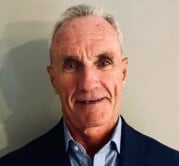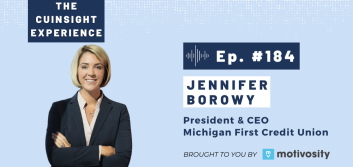A credit union board’s greatest responsibility

Much has been written and spoken at credit union conferences on the topic of succession planning for the CEO position in credit unions. Yet, despite all the conversation, a large number of credit unions are woefully unprepared for the time when their CEO expresses his/her desire to retire. This conversation should not be a surprise to the Board members especially when it occurs at an age-appropriate time in the CEO’s life.
Anticipation of this event and planning for it are among the most important duties for the board of any credit union regardless of its size. Obviously, larger credit unions have more financial ability to build a robust succession plan, yet many fail to devote adequate resources to the task. Smaller credit unions will argue that they cannot afford the costs inherent in such a plan. I argue that they cannot afford not to do so. One of the most frequent reasons why a smaller credit union seeks a merger partner is the failure of the board to anticipate and plan for the departure of a long-term CEO.
In all cases it is imperative that boards and management have ongoing discussions about succession. This becomes vital as a CEO or senior manager approaches a normal retirement age. Boards are often reluctant to ask the difficult question about retirement plans but if the CEO is not forthcoming with this information, it is simply part of the board’s job to determine. This dialogue not only includes talk of the CEO’s retirement plans but also of his/her thoughts about candidates within the organization.
Much debate has taken place about the benefits of external vs. internal candidates. I firmly believe the best succession plans involve a well-developed internal successor. Culture is vital to the credit union industry and the selection of an internal candidate can go a long way to maintaining the culture of a successful credit union. The term well developed is not used accidentally. A succession plan should be a multi-year and multi-pronged effort by the CEO, the successor and the board. Adequate resources should be devoted to the preparation of the successor. This will include a variety of topics and approaches depending on the strengths and weaknesses of the individual. It might include exposure to functional areas of the credit union where the candidate is not as well versed, and it might include the utilization of external course work or training programs. Our national and local trade associations offer a number of educational events that are appropriate for a CEO in training as do a number of vendors in the credit union ecosystem.
Assuming that a credit union CEO and board have identified a candidate and are working on the development of that individual, the question arises of guaranteeing that he/she will stay at this credit union throughout the succession process. There are two important factors at play in the retention of the candidate. The first is that there is a well thought out and documented plan. The candidate needs to understand the developmental expectations and in turn have knowledge of a timeline through which the process will flow. A strong candidate who is making progress in all of the desired areas needs to know that there is a specific date in mind when the transfer will take place. Delays in this transition will often prompt the successor to look at opportunities elsewhere in the industry.
Boards need to be cognizant of the competition in the credit union industry for CEO level talent. Failure to adequately compensate your candidate may result in the loss of that executive to a competing credit union. This leads to the final issue of compensation. If a credit union (large or small) has identified and is working with a succession candidate, the subject of salary, bonus and benefits needs to be addressed. A competitive salary and bonus structure needs to be in place with an eye to the fact that this individual has been selected and is being developed to become the next CEO. Furthermore, the concept of a SERP makes great business sense here for both parties. A split dollar life insurance policy (CASD) with a proper vesting schedule can be the perfect tool to retain the executive at the credit union without creating additional expenses. In fact, CASD plans are often a significant retention tool for CEOs and other members of the c-suite. For more information on how a CASD can help at your credit union, please contact me or any other member of the team at Modern Capital. We specialize in helping credit unions achieve success using this vital tool.





